साँचे का जीवनकाल
- 2024-10-29
मोल्ड लाइफ से तात्पर्य उन भागों की संख्या से है जिन्हें भागों की गुणवत्ता सुनिश्चित करते हुए बनाया जा सकता है। इसमें कमजोर हिस्सों को बार-बार तेज करना और बदलना शामिल है जब तक कि मोल्ड का मुख्य हिस्सा बदल नहीं जाता है, जिसके परिणामस्वरूप कुल योग्य हिस्से बन जाते हैं।
साँचे की विफलता को असामान्य विफलता और सामान्य विफलता में विभाजित किया गया है। असामान्य विफलता (प्रारंभिक विफलता) एक निश्चित औद्योगिक स्तर पर मान्यता प्राप्त जीवनकाल तक पहुंचने से पहले किसी सांचे को सेवा में लाने में असमर्थता को संदर्भित करती है। विफलता के शुरुआती रूपों में प्लास्टिक विरूपण, फ्रैक्चर और गंभीर स्थानीयकृत टूट-फूट शामिल हैं। सामान्य विफलता का तात्पर्य बड़े पैमाने पर उत्पादन और उपयोग के बाद धीमी प्लास्टिक विरूपण, समान घिसाव, या थकान फ्रैक्चर के कारण सेवा जारी रखने में मोल्डों की असमर्थता है।
मोल्ड की सामान्य विफलता से पहले उत्पादित योग्य उत्पादों की संख्या को मोल्ड का सामान्य जीवन कहा जाता है, जिसे संक्षेप में मोल्ड जीवन कहा जाता है। मोल्ड की पहली मरम्मत से पहले उत्पादित योग्य उत्पादों की संख्या को पहला जीवन कहा जाता है; किसी साँचे की एक मरम्मत से अगली मरम्मत तक उत्पादित योग्य उत्पादों की संख्या को साँचे की मरम्मत जीवन कहा जाता है। एक साँचे का जीवनकाल उसके प्रारंभिक जीवनकाल और प्रत्येक बाद की मरम्मत के जीवनकाल का योग होता है।
किसी सांचे का जीवनकाल उसके आकार और संरचना से संबंधित होता है, और यह एक निश्चित अवधि के दौरान सांचे के भौतिक गुणों, डिजाइन और विनिर्माण स्तर को संदर्भित करता है। सांचों के ताप उपचार, उपयोग और रखरखाव के स्तर का व्यापक प्रतिबिंब। साँचे का जीवनकाल कुछ हद तक किसी क्षेत्र या देश में धातुकर्म और यांत्रिक विनिर्माण उद्योगों के स्तर को दर्शाता है।
काम करने की स्थिति और क्षतिग्रस्त भागों में महत्वपूर्ण अंतर के साथ कई प्रकार के सांचे हैं, लेकिन विफलता मोड को मोटे तौर पर तीन प्रकारों में संक्षेपित किया जा सकता है: घिसाव, फ्रैक्चर और प्लास्टिक विरूपण।
(1) टूट-फूट की विफलता
जब सांचा सेवा में होता है, तो यह निर्मित बिलेट के संपर्क में आता है और सापेक्ष गति उत्पन्न करता है। सतह की सापेक्ष गति के कारण संपर्क सतह से धीरे-धीरे सामग्री खोने की घटना को घिसाव कहा जाता है।
(2) फ्रैक्चर विफलता
जब सांचे में बड़ी दरारें आ जाती हैं या वह दो या कई हिस्सों में अलग हो जाता है और अपनी सेवा क्षमता खो देता है, तो यह फ्रैक्चर विफलता बन जाता है। फ्रैक्चर को प्लास्टिक फ्रैक्चर और भंगुर फ्रैक्चर में विभाजित किया जा सकता है। मोल्ड सामग्री ज्यादातर मध्यम से उच्च शक्ति वाले स्टील होते हैं, और फ्रैक्चर का रूप ज्यादातर भंगुर फ्रैक्चर होता है। भंगुर फ्रैक्चर को एक बार के फ्रैक्चर और थकान फ्रैक्चर में विभाजित किया जा सकता है।
(3) प्लास्टिक विरूपण विफलता
प्लास्टिक मोल्ड सेवा के दौरान महत्वपूर्ण और असमान तनाव का अनुभव करते हैं। जब मोल्ड के एक निश्चित हिस्से में तनाव उस तापमान पर मोल्ड सामग्री की उपज सीमा से अधिक हो जाता है, तो जाली स्लिप, ट्विनिंग, ग्रेन बाउंड्री स्लिप आदि के माध्यम से प्लास्टिक विरूपण होगा, जिससे ज्यामितीय आकार या आकार बदल जाएगा, और इसकी मरम्मत नहीं की जा सकती है। सेवा से पहले, जिसे प्लास्टिक विरूपण विफलता कहा जाता है। प्लास्टिक विरूपण के विफलता मोड में परेशान होना, झुकना, गुहा का विस्तार, ढहना आदि शामिल हैं।
किसी सांचे का प्लास्टिक विरूपण सांचे में प्रयुक्त धातु सामग्री की उपज प्रक्रिया है। प्लास्टिक विरूपण होता है या नहीं यह मुख्य रूप से यांत्रिक भार और मोल्ड की कमरे के तापमान की ताकत से निर्धारित होता है। उच्च तापमान पर काम करने वाले साँचे में प्लास्टिक विरूपण की घटना मुख्य रूप से साँचे के कार्यशील तापमान और साँचे की सामग्री की उच्च तापमान शक्ति पर निर्भर करती है।
(1) साँचे की संरचना का प्रभाव
मोल्ड संरचना का मोल्ड की तनाव स्थिति पर महत्वपूर्ण प्रभाव पड़ता है। एक उचित मोल्ड संरचना यह सुनिश्चित कर सकती है कि ऑपरेशन के दौरान मोल्ड पर समान रूप से जोर दिया जाता है, विलक्षण लोडिंग की संभावना कम होती है, और तनाव एकाग्रता कम होती है। साँचे कई प्रकार के होते हैं, जिनके रूप और कार्य वातावरण में महत्वपूर्ण अंतर होता है,
(2) मोल्ड की कामकाजी परिस्थितियों का प्रभाव
1) निर्मित भागों की सामग्री और तापमान
① भागों को बनाने के लिए उपयोग की जाने वाली सामग्रियों में धातु और गैर-धातु शामिल हैं। सामान्यतया, गैर-धातु सामग्री में कम ताकत होती है, कम गठन बल की आवश्यकता होती है, सांचे पर कम तनाव होता है, और सांचे का जीवन लंबा होता है। इसलिए, धातु बनाने वाले सांचों का जीवनकाल गैर-धातु बनाने वाले सांचों की तुलना में कम होता है।
② उच्च तापमान वाले वर्कपीस बनाते समय, प्राप्त गर्मी के कारण मोल्ड गर्म हो जाता है। जैसे-जैसे तापमान बढ़ता है, मोल्ड की ताकत कम हो जाती है, जिससे प्लास्टिक विरूपण का खतरा होता है। इसी समय, वर्कपीस के संपर्क में मोल्ड की सतह और गैर-संपर्क सतह के बीच एक महत्वपूर्ण तापमान अंतर होता है, जो मोल्ड में तापमान तनाव का कारण बनता है।
2) उपकरण विशेषताएँ
① उपकरण की सटीकता और कठोरता वर्कपीस बनाने वाले मोल्ड के बल द्वारा प्रदान की जाती है। निर्माण प्रक्रिया के दौरान, लगाए गए बल के कारण उपकरण लोचदार विरूपण से गुजरेगा।
② गति उपकरण द्वारा मोल्ड और वर्कपीस पर लगाया गया बल समय के साथ धीरे-धीरे बढ़ता है, और उपकरण की गति बल लगाने की प्रक्रिया को प्रभावित करती है। उपकरण की गति जितनी अधिक होगी, प्रति यूनिट समय में मोल्ड पर प्रभाव बल उतना ही अधिक होगा (उच्च प्रभाव); समय जितना कम होगा, प्रभाव ऊर्जा को प्रसारित और जारी होने में उतना ही कम समय लगेगा, जिससे स्थानीय स्तर पर ध्यान केंद्रित करना आसान हो जाएगा, जिसके परिणामस्वरूप स्थानीय तनाव उपज तनाव या मोल्ड सामग्री की फ्रैक्चर ताकत से अधिक हो जाएगा। इसलिए, उपकरण की गति जितनी अधिक होगी, मोल्ड के टूटने या प्लास्टिक विरूपण की विफलता की संभावना उतनी ही अधिक होगी।
3) स्नेहन
मोल्ड और बिलेट के बीच सापेक्ष गति सतह को चिकनाई करने से मोल्ड और बिलेट के बीच सीधा संपर्क कम हो सकता है, घिसाव कम हो सकता है और गठन बल कम हो सकता है। साथ ही, स्नेहक बिलेट से मोल्ड तक गर्मी हस्तांतरण को कुछ हद तक बाधित कर सकते हैं, मोल्ड तापमान को कम कर सकते हैं, और मोल्ड जीवन में सुधार के लिए फायदेमंद हो सकते हैं।
(3) मोल्ड सामग्री गुणों का प्रभाव
मोल्ड सामग्री के प्रदर्शन का मोल्ड के जीवनकाल पर महत्वपूर्ण प्रभाव पड़ता है, जिसमें ताकत, प्रभाव क्रूरता, पहनने के प्रतिरोध, संक्षारण प्रतिरोध, कठोरता, थर्मल स्थिरता और गर्मी थकान प्रतिरोध शामिल हैं।
(4) मोल्ड निर्माण प्रक्रिया का प्रभाव
1) मॉड्यूल फोर्जिंग के दौरान, मॉड्यूल हीटिंग और कूलिंग के कारण अंदर और बाहर के बीच तापमान का अंतर थर्मल तनाव उत्पन्न करेगा; अपसेटिंग, पंचिंग और छेदों के विस्तार जैसी प्रक्रियाओं के दौरान तकनीकी मापदंडों का अनुचित चयन आसानी से फोर्जिंग ब्लैंक के टूटने का कारण बन सकता है। इसके अलावा, जब फोर्जिंग अनुपात एक निश्चित मूल्य से अधिक हो जाता है, तो रेशेदार ऊतक के गठन के कारण अनुप्रस्थ यांत्रिक गुणों में तेजी से कमी आती है, जिससे अनिसोट्रॉपी होती है।
2) सांचों की विद्युत मशीनिंग में, अलग-अलग डिग्री की गिरावट वाली परतें हो सकती हैं। इसके अलावा, स्थानीय अचानक हीटिंग और शीतलन के कारण, अवशिष्ट तनाव और दरारें आसानी से बन जाती हैं।
3) साँचे का ताप उपचार
मॉड्यूल फोर्जिंग और रफ मशीनिंग के बाद मोल्ड हीट ट्रीटमेंट की व्यवस्था की जाती है, और यह मोल्ड प्रसंस्करण की लगभग अंतिम प्रक्रिया है। मोल्ड सामग्री का चयन और गर्मी उपचार प्रक्रियाओं के निर्धारण का मोल्ड के प्रदर्शन पर महत्वपूर्ण प्रभाव पड़ता है।
(1) उद्देश्य: सामान्य उत्पादन सुनिश्चित करते हुए इष्टतम प्रदर्शन बनाए रखना और उपकरण की सेवा जीवन को बढ़ाना।
(2) आवेदन का दायरा: सांचों की मरम्मत और रखरखाव के लिए उपयुक्त।
(3) नियमित निरीक्षण और रखरखाव: मोल्ड मरम्मत और ऊपरी और निचले मोल्ड कर्मियों द्वारा नियमित रखरखाव और निरीक्षण किया जाना चाहिए।
(4) इलेक्ट्रोलाइटिक अल्ट्रासोनिक सफाई विधि का प्रसंस्कृत सांचों पर बेहतर सफाई प्रभाव पड़ता है। सफाई करते समय यह जंग की रोकथाम में भी भूमिका निभाता है
1. दैनिक नियमित निरीक्षण और रखरखाव:
क्या मोल्ड सामान्य स्थिति में चल रहा है?
एक। क्या लो-वोल्टेज लॉकिंग सुरक्षा है; बी। क्या सक्रिय भाग जैसे कि गाइड पोस्ट, शीर्ष छड़ें और पंक्तियाँ ठीक से घिसी हुई और चिकनाईयुक्त हैं। हर 12 घंटे में कम से कम एक बार ईंधन भरना आवश्यक है, और विशेष संरचनाओं के लिए, ईंधन भरने की आवृत्ति बढ़ाई जानी चाहिए। सी। क्या मोल्ड के निश्चित टेम्पलेट के स्क्रू और लॉकिंग क्लिप ढीले हैं;
1.2 सामान्य उत्पादन स्थितियाँ: जांचें कि क्या उत्पाद के दोष मोल्ड से संबंधित हैं;
1.3 उतारते समय, मोल्ड का व्यापक निरीक्षण किया जाना चाहिए और जंग रोकथाम उपचार किया जाना चाहिए: मोल्ड गुहा, कोर, इजेक्शन तंत्र और पंक्ति स्थिति में नमी को पोंछें, और मोल्ड जंग अवरोधक स्प्रे करें या मक्खन लगाएं।
1.4 मशीन से निकाले जाने के बाद मोल्ड को निर्दिष्ट स्थान पर रखा जाना चाहिए और रिकॉर्ड किया जाना चाहिए:
एक। साँचे की स्थिति: अक्षुण्ण या मरम्मत की आवश्यकता है। बी। साँचे बनाने के दौरान जंग रोधी उपचार विधि।
2. त्रैमासिक नियमित निरीक्षण:
मुख्य रूप से उन सांचों की सफाई और रखरखाव के लिए जिनका उपयोग दो महीने से अधिक समय से नहीं किया गया है।
2.1 मोल्ड खोलें और आंतरिक जंग रोकथाम प्रभाव की जांच करें। यदि कोई असामान्य स्थिति है, तो जंग रोकथाम उपचार फिर से किया जाना चाहिए। जो सांचे लंबे समय से उपयोग में नहीं आ रहे हैं उन पर मक्खन का लेप लगाना चाहिए।
2.2 अपनी मूल स्थिति पर लौटें और रिकॉर्ड बनाएं।
मोल्ड यांत्रिक उद्योग के उत्पादन के लिए बुनियादी प्रक्रिया उपकरण है और औद्योगिक उत्पादों के उत्पादन में एक अनिवार्य उपकरण है। मोल्ड स्टील से बने सांचों के प्रदर्शन के लिए सख्त उत्पादन प्रक्रिया पर्यवेक्षण की आवश्यकता होती है, और प्रारंभिक विफलता, गर्मी उपचार क्रैकिंग और भौतिक समस्याओं के कारण होने वाले अन्य दोषों को रोकने के लिए मोल्ड उत्पादन के लिए कच्चे माल को भी सख्ती से नियंत्रित किया जाना चाहिए।
सांचों के लिए कच्चे माल का नियंत्रण निम्नलिखित पहलुओं से किया जाता है:
1. स्थूल निरीक्षण
स्टील के प्रदर्शन को सुनिश्चित करने में रासायनिक संरचना निर्णायक होती है, लेकिन योग्य संरचना स्टील के प्रदर्शन को पूरी तरह से स्पष्ट नहीं कर सकती है। स्टील की आंतरिक संरचना और संरचना की असमानता के कारण, मैक्रोस्कोपिक निरीक्षण काफी हद तक इस कमी को पूरा करता है। मैक्रोस्कोपिक परीक्षण से स्टील के क्रिस्टलीकरण, स्टील की निरंतरता की विफलता और कुछ घटकों की गैर-एकरूपता का निरीक्षण किया जा सकता है। आठ सामान्य स्थूल दोष: पृथक्करण, सरंध्रता, समावेशन, सिकुड़न, बुलबुले, सफेद धब्बे, दरारें और सिलवटें।
2. एनील्ड ऊतक का मूल्यांकन
एनीलिंग का उद्देश्य स्टील की कठोरता को कम करना, मशीनिंग की सुविधा प्रदान करना और बाद के ताप उपचार के लिए संरचना तैयार करना है।
3. कार्बाइड की एकरूपता न होना
सीआर12 प्रकार के मार्टेंसिटिक स्टील की सूक्ष्म संरचना में बड़ी मात्रा में यूटेक्टिक कार्बाइड होते हैं, और कार्बाइड की असमानता का इसके प्रदर्शन पर बहुत महत्वपूर्ण प्रभाव पड़ता है। इसलिए कार्बाइड के वितरण पर सख्त नियंत्रण रखा जाना चाहिए।
संक्षेप में, मोल्ड कारखानों और कार्यशालाओं में उत्पादन वस्तुओं की जटिलता और इस तथ्य के कारण कि वे ज्यादातर एकल टुकड़े या छोटे बैच हैं, यह मोल्ड उत्पादन कोटा के निर्माण और प्रबंधन में कुछ कठिनाइयां लाता है। इसके अलावा, प्रत्येक कारखाने और कार्यशाला की उत्पादन विधियाँ, उपकरण और तकनीकी गुण समान नहीं हैं। इसलिए, कोटा तैयार करते समय, श्रम उत्पादकता में सुधार के लिए कारखाने और कार्यशाला की वास्तविक स्थिति के आधार पर उन्नत और उचित कार्य घंटे कोटा विकसित करने के लिए उचित तरीके ढूंढना आवश्यक है।
-
टैग:

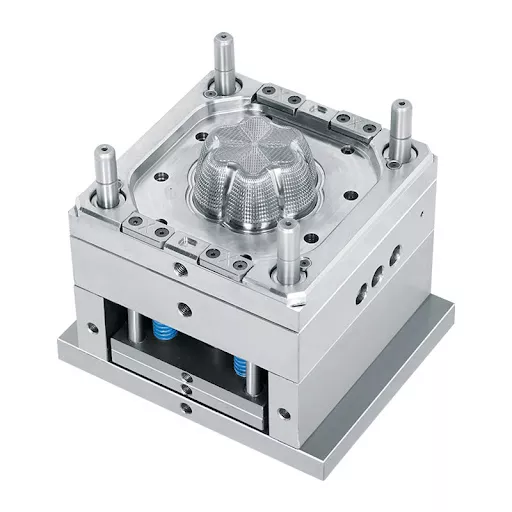
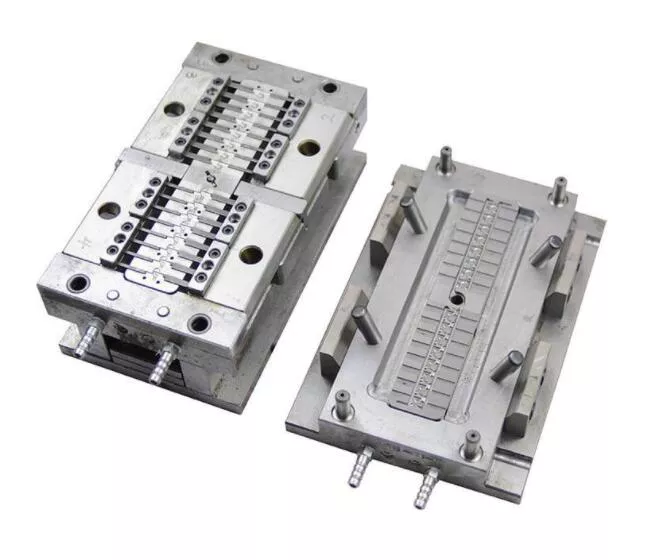
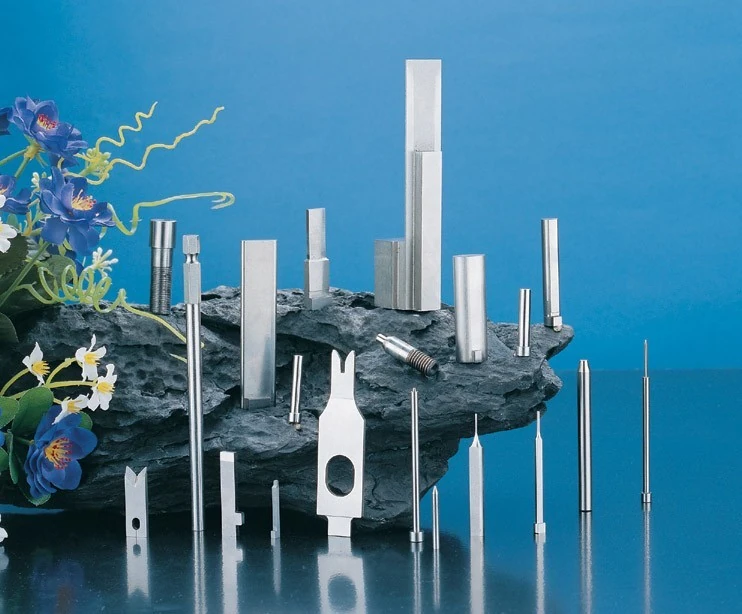
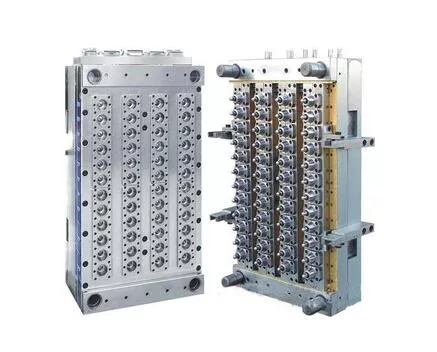
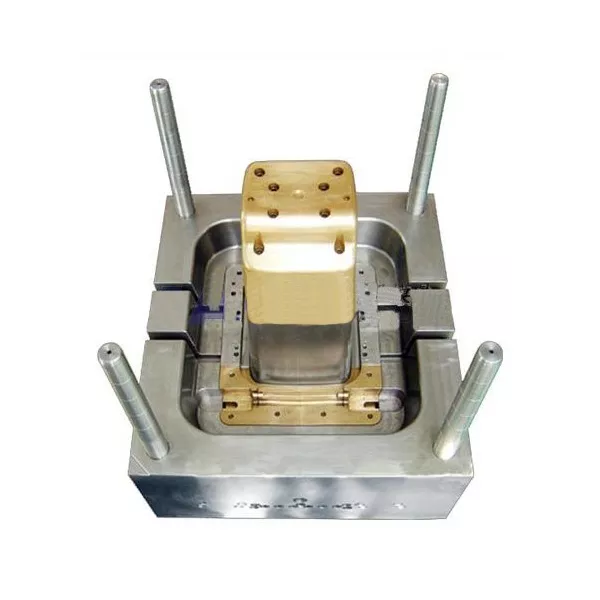
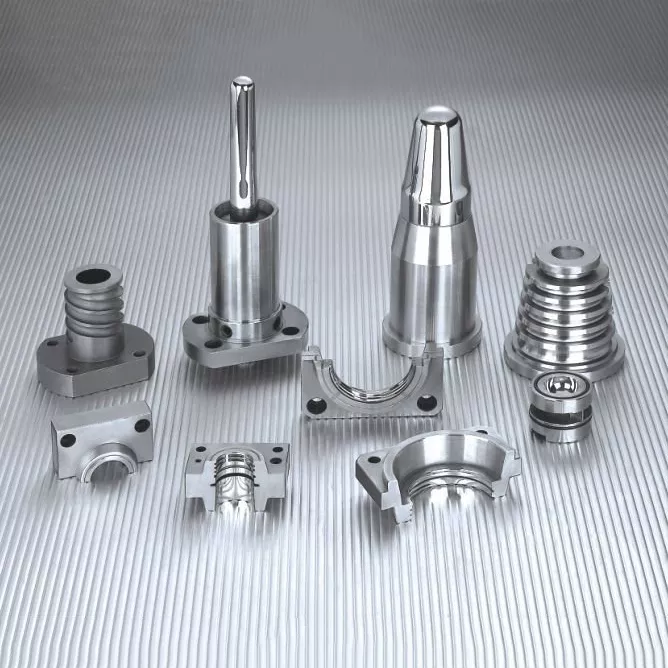
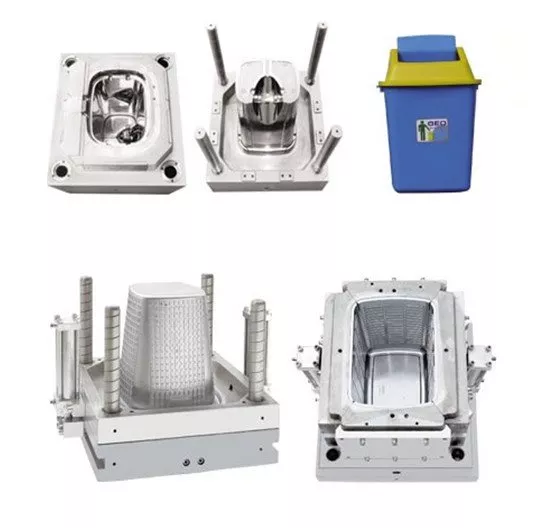
अब अपने अनुशोध भेजें